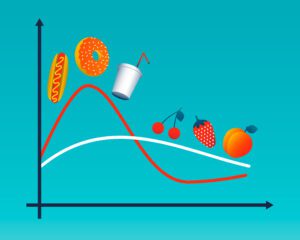The Glycemic Index: Looking Back Over 40 Years
September 2023Since its inception over 40 years ago, the glycemic index has been a valuable tool to aid in the management of glucose levels.
History
The glycemic index was proposed in the 1980s as a means to classify carbohydrate foods according to their effect on postprandial plasma glucose responses. The initial scientific paper that introduced the glycemic index was authored by Dr. David Jenkins, and co-authored by INQUIS Senior Scientists Dr. Thomas Wolever and Dr. Alexandra Jenkins.
Utility and Health Benefits
Low GI foods release their carbohydrate slowly and elicit a lower glycemic response while high GI foods are rapidly digested with a corresponding higher glycemic response. Clinical evidence demonstrates that low GI diets may help in weight maintenance and weight loss, in addition to protecting against chronic disease such as diabetes, heart disease, and certain cancers.
Methodology
The methodology for determining GI is well established and has been shown to be reproducible by laboratories across the world. Dr. Wolever has authored several research articles in scientific journals about glycemic index methodology and reproducibility.
ISO 26642:2010
The International Standards Organization published ISO 26642:2010 “Food Products – Determination of the GI and recommendation for food classification” as a way of standardizing GI testing throughout various research centers. INQUIS adheres to this protocol, which involves 10 research participants consuming specific portions of test or reference foods after an overnight fast. At fasting and after consuming the foods, participants provide finger-prick blood samples at specified time points which are analyzed for plasma glucose levels over the course of 2 hours. The incremental area under the blood glucose curves are calculated and the test foods are expressed as a percentage of the iAUCs for the reference foods, resulting in the glycemic index value of the food.
With the advancement of technology, including wearable devices such as continuous glucose monitors (CGMs) and tools such as the GI, consumers are enabled to make changes that can positively impact postprandial glucose response and improve their overall health.

